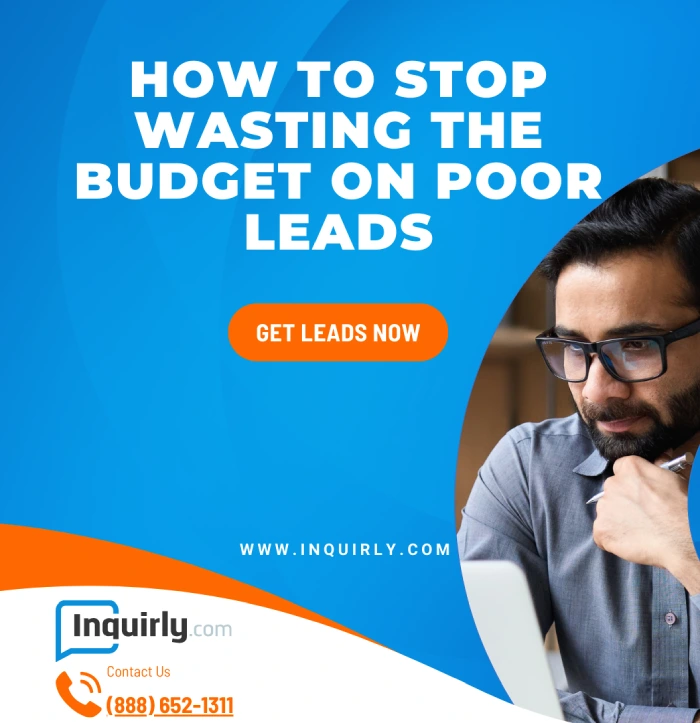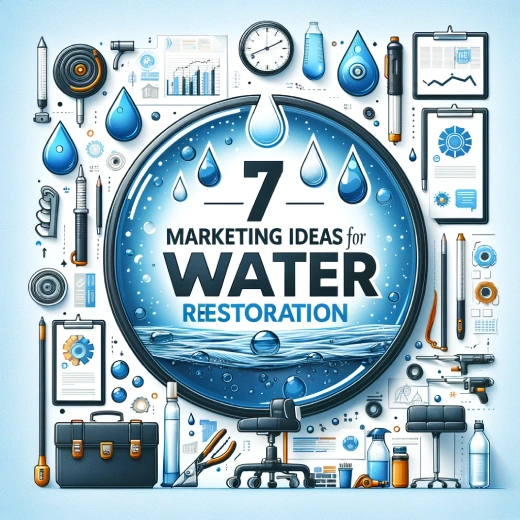Wasting marketing budget on a poor leads that aren’t convert into paying customers. Is a very common problem that any business can face. According to the Association of National Advertisers, 23% of the $88 billion spent annually by marketers on automated digital ad buying is wasted.
If you want to save marketing budget money. Step 1 – You need to focus on lead quality over quantity. Quality leads are more likely to convert into customers. So, focus your efforts on targeting the right audience.
In this blog post as we are going to reveal 8 useful tips that will help to stop wasting money on poor leads.
Start Getting Exclusive Leads Today
Contact us
How to Stop Wasting the Budget on Poor Leads and Attract Good Ones
1. Identify and Qualify Leads
Before embarking on lead generation efforts, it is essential to understand the characteristics of a good lead. A good lead is an individual or organization that demonstrates a genuine interest in your products or services. And has the potential to become a paying customer. Conversely, a bad lead is someone who is unlikely to convert. This can be due to a lack of interest, budget constraints, or other factors.
How to identify and qualify leads?
To effectively identify and qualify leads, businesses should employ a combination of techniques, including:
- Lead scoring: This process assigns points to leads based on their interactions with your brand. Such as website visits, form submissions, and email engagement. Leads with higher scores are considered more qualified and should be prioritized in the sales funnel.
- Lead profiling: This involves creating detailed profiles of your ideal customer persona (ICP). To better understand their needs, challenges, and buying behaviors. This information can be used to tailor your marketing messages and content to attract the right leads.
- Lead validation: This process involves verifying the contact information and qualification criteria of leads to ensure their authenticity and relevance. This can be done through email verification services, phone calls, or social media checks.
2. Attract the Right Audience
The key to generating high-quality leads lies in creating content that resonates with your target audience and attracts their attention. This content should be informative, engaging, and tailored to the specific needs and interests of your ideal customers.
Effective lead generation strategies include:
- Creating high-quality content: Develop blog posts, infographics, videos, and other forms of content. They should provide valuable insights and solutions to your target audience’s problems.
- Leveraging social media: Engage with your audience on social media platforms. Share relevant content, participating in conversations, and running targeted ads.
- Optimizing for search engines (SEO): To improve search engine rankings and attract organic traffic. Ensure your website and content are optimized for relevant keywords.
- Incorporating inbound marketing: Attract leads by creating valuable content that draws prospects to your website.
3. Move Prospects Down the Sales Funnel
Once you have generated a pool of high-quality leads, the next step is to nurture them through the sales funnel. Gradually moving them from awareness to consideration and finally to conversion.
Effective lead nurturing strategies include:
- Email marketing: Send personalized email campaigns that provide valuable content. Educate leads about your products or services, and offer incentives to move them further down the funnel.
- Drip campaigns: Automate email sequences that deliver targeted content based on leads’ actions and interests.
- Retargeting: Use retargeting ads to remind potential customers who have interacted with your brand in the past. Keeping your company top of mind and encouraging them to take action.
4. Continuous Evaluation and Adaptation
The business landscape is dynamic, and what works today may not be as effective tomorrow. Regularly evaluate the performance of your lead generation efforts and be prepared to adapt.
A proactive approach to refining your strategy ensures that your budget is always aligned with the needs of your target audience. This will prevent the wastage of outdated or ineffective tactics.
5. Invest in Lead Nurturing
Rather than discarding leads that don’t convert immediately, invest in lead nurturing. Building relationships with potential customers over time increases the likelihood of conversion.
It’s a cost-effective strategy that maximizes the value of each lead, turning what might initially seem like a poor prospect into a valuable, long-term customer.
6. Bridging the Gap Between Marketing and Sales
Poor leads often result from a disconnect between marketing and sales teams. Collaborative efforts, including regular communication and shared goals, can bridge this gap.
Aligning both departments ensures that marketing strategies are aligned with the realities of the sales process, reducing the chances of attracting leads that don’t meet the criteria for conversion.
7. Learning from Setbacks
Every unsuccessful lead is an opportunity to learn and improve. Implement feedback loops to gather insights from the sales team about why certain leads didn’t convert. Use this information to refine your targeting, messaging, and overall lead generation strategy. Continuous learning from setbacks is a crucial element in the quest to stop wasting the budget on poor leads.
8. Contact Lead Generation Professionals
To secure a return on investment on your lead generation spending, contact lead generation professionals. These professionals have the experience, resources, and data to provide quality leads that are more likely to turn into sales.
Conclusion
In short, businesses can’t afford to waste their budget on poor leads. A practical, data-driven approach to lead generation is key, emphasizing quality over quantity. Streamlining processes, targeting the right audience, and fostering collaboration ensure every penny spent contributes to business growth and success.
If you’re seeking professional assistance in attracting your restoration business leads, contact us today.



